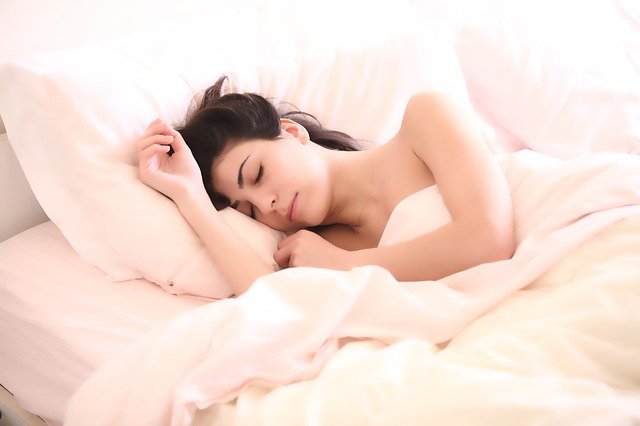A good night’s rest is important for physical and mental health. According to the Centers for Disease Control (CDC), individuals need a minimum of seven hours of sleep to feel rested. However, many get less than this. While sometimes this is due to issues like insomnia, other times it’s related to allergies.
Fortunately, manufacturers have created hypoallergenic materials to help these individuals. As an example, here are 4 of the best types of beds for an allergy-free rest.
What Does Hypoallergenic Mean?
Hypoallergenic means a product has the ability to reduce or eliminate reactions related to common symptoms that may include skin irritation, runny noses, and asthma. Hypoallergenic mattresses, specifically, help users avoid an uneasy sleep by providing a barrier against dust mites and other potential health risks related to allergies.
Cost
It is important to note that the mattresses mentioned below cost a bit more than standard products. Their hypoallergenic properties are the primary reason, making them more expensive to produce and distribute. Nevertheless, their price is offset by a huge return on investment when it comes to the health and proper sleep of you and your entire family. Take these items into consideration when you are ready to shop for your new mattress.
1. Memory Foam
Memory foam is a dense form of mattress. The more you use it, the better it is at maintaining your most comfortable positions. Furthermore, it’s naturally hypoallergenic.
This means it has a built-in dust mite allergy treatment. Not only will this material last longer than the standard mattress, but it will also protect you from those pestering allergies that may linger on your bed. In fact, the density of memory foam makes it the perfect barrier for reducing the penetration of allergens. To maximize its properties, make sure to let the mattress air out for a while after purchase. This process of off-gassing releases some of the chemicals used in packaging and also allows for the material to expand properly.
If you want to avoid this process and save some time, then purchase a memory foam mattress made with a percentage of plant-based materials. In addition, check if it’s certified by OEKO-TEX or CertiPUR-US.
2. Latex Mattress
Latex is naturally resistant to dust mites. On top of this, the material is resistant to mold and mildew. In turn, it’s an option for people who are sensitive to both and a great option for children’s bedrooms. Occasional water spills or accidents of the sort will not have a detrimental effect on this material, as the latex allows for it to retain its hypoallergenic properties over long periods of time.
A latex mattress is even a safe option for those who are allergic to the latex material itself. The reason for this is the bedding goes through an extensive process of multiple washes and inspections to remove the allergens. When you shop for this form of mattress, make sure it’s made of 100% natural latex. Synthetic versions don’t have the same hypoallergenic capabilities and may become an irritant to those sensitive to the material.
Generally, this type of mattress has the same contouring ability as gloves made of latex. In other words, it feels similar to a product made of memory foam.
3. Bamboo Mattress
Although they could be somewhat pricey, mattresses covered with 100% bamboo have an enormous return of good health for those with sensitive allergy symptoms. This plant-based material is naturally resistant to dust mites, mold, and mildew. Furthermore, a bamboo mattress has built-in thermoregulation components to keep the surface feeling fresh for a comfortable and protective sleep.
What thermoregulation does is prevent the surface from getting too warm and humid, the perfect conditions for attracting allergens. Unlike a cotton mattress, this bamboo material keeps you cool in the summer and warm in the winter, free from allergens all year round.
Additionally, many bamboo mattresses go beyond the hypoallergenic properties of the cover. They can also contain multiple layers of natural latex interwoven into the entire mattress to protect the interior and offer a sturdy, yet comfortable sleeping experience.
4. Organic Wool Mattress
Some people get itchy at the site of a wool sweater. Luckily, these individuals wouldn’t have the same reaction if they purchased a mattress made of organic wool. This is because this material is 100% hypoallergenic.
It comes down to how the product is produced. Unlike conventional wool, the organic version is not coated with harmful chemicals and synthetic material. In many cases, it is the latter and not the wool itself that causes people’s skin to itch or become irritated.
In their organic state, wool fibers contain scales that automatically clean and ventilate. In doing so, they remove moisture and other toxic items from their surface by locking them out. As a result, organic wool is nearly impervious to dust mites, mold, and other bacteria.
Organic wool mattresses also have similar abilities as one comprised of bamboo. Among these is natural thermoregulation properties. This not only keeps you warm in the winter and cool in the summer. It also helps wick away sweat from your body to not only keep you comfortable while you sleep, but also keep the mattress under you cool.
In conclusion, the 4 types of beds mentioned above are the ultimate for an allergy-free rest. They provide hypoallergenic coverings to mitigate dust mites, mildew, and other bacteria. Further, they offer additional properties like increased comfort and natural thermoregulation.



